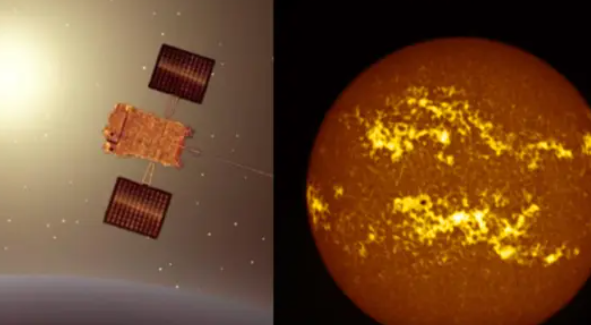Aditya-L1 Instruments Capture Solar Fury, ISRO Reports
The Aditya-L1 spacecraft started its trip toward the Sun on September 2, 2023. It was India’s first mission to study the sun. The Lagrangian point L1 was successfully reached on January 6, 2024, just 127 days after launch. It is in a key location about 1.5 million kilometers from Earth. The location at L1 is very important because it gives the spacecraft a clear view of the Sun, which makes monitoring the Sun easier all the time.
Onboard Instruments and Recent Observations
Two important tools that Aditya-L1 has are the Solar Ultra Violet Imaging Telescope (SUIT) and the Visible Emission Line Coronagraph (VELC). These tools are very important for recording and studying things that happen in the sun. In May 2024, there was an unusually long time of high solar activity. During this time, the spacecraft picked up a lot of X- and M-class solar flares coming from AR13664, an active region on the Sun. Coronal Mass Ejections (CMEs) were linked to these flares, which happened mostly around May 8 and 9.
Impact of Solar Activity
On May 11, Earth was hit by a big geomagnetic storm caused by solar flares and following CMEs. Because these kinds of storms can affect power lines and satellite communications, studying them is very important for coming up with ways to protect technology infrastructure.
About Aditya-L1 spacecraft
- Mission Overview: India’s first dedicated scientific mission to study the Sun, launched by the Indian Space Research Organisation (ISRO). The spacecraft is designed to observe the solar atmosphere, including the photosphere, chromosphere, and the outermost layers of the Sun. The mission is named after the Hindu Sun god, Aditya.
- Position and Instruments: Positioned at the L1 Lagrange point between Earth and the Sun, approximately 1.5 million kilometers from Earth, offering a stable vantage point for solar observations. Equipped with seven instruments, including a Visible Emission Line Coronagraph (VELC) to study the dynamic processes of the solar corona.
- Scientific Goals: Attempts to help people understand solar weather and how it affects predictions about space weather. Very important for keeping satellites and other space assets safe from the sun’s actions.
Month: Current Affairs - June, 2024
Category: Science & Technology Current Affairs







